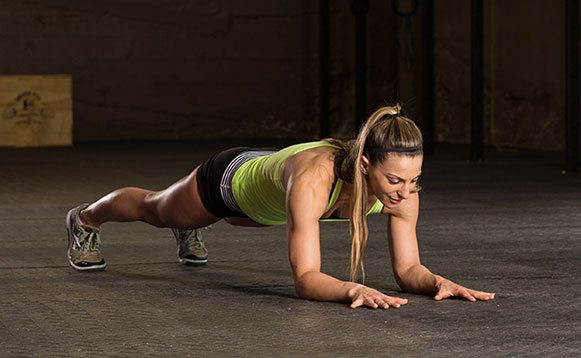What Comes After Planks?
Static planks are great, but they shouldn’t be considered a goal—they are a starting point. Life is movement and our training should prepare us to do just that. The current record for the longest time in a plank position is three hours seven minutes and 15 seconds. That is beyond difficult to be sure, but it’s also kind of pointless. It’s like a long cardiovascular training session in the form of a plank. If you can hold a plank for three hours, you aren’t necessarily getting any stronger—you can simply hold a plank for a really long time.
Here’s What You Need to Know
Done properly, planks are a wonderful exercise for teaching trunk, hip and shoulder stability by integrating a full-body contraction. This is an ideal starting point for activity.
Once you’ve mastered good plank technique, stop holding it for longer amounts of time and start moving it. Despite the intense muscle burning, long isometrics actually burn the lowest number of calories. Life is movement, not the absence of it.
Follow a system for developing moving plank options so you know why you are adding any movement to planks. Whenever I am speaking on the topic of ab training, I always ask the audience, “What’s the purpose of planks?” I am usually met with silence, so I’ll ask the question again, this time letting them know that they are unlikely to offer an incorrect answer. Now, I start to get some responses, most of which are abstract and generic, even if they are correct, such as: “They teach full-body stability.” “They develop good core strength.” “They help prevent back pain.” O.K., but why do I want any of that?
What’s the purpose of having good core strength and full body stability? To do stuff! It’s not a complicated answer. We tend to overcomplicate and sometimes overthink things in fitness. Whatever you (or your clients) want to do—play a sport, play tag with your kids, compete in obstacle races or catch butterflies—you want to feel good when you do it and not have to worry about your body. The same is true for the stuff we all have to do, but may not really love to do (things like doing laundry and yard work or putting away groceries).
Thus, the ultimate purpose of planks is to get better at moving. It makes little sense then to have a core-strengthening program that focuses strictly on the absence of movement. This idea has gotten out of hand to the point where some people erroneously recommend doing only anti-rotation exercises to train rotation. Think about it this way: Sitting behind the wheel of a car that is motionless is not how you learn to drive.
This idea has become popular because some have ascribed to the idea that rotation is “dangerous.” In other news, life is dangerous, so you’d better train for it. Life will ask you to move quickly, randomly and correctly at some point to avoid injury. Proximal strength equals distal power. In other words, strength in the center gives you more powerful, controlled movements.
Keeping still forever in exercise is like staying in first grade forever. You learn planks to be able to do harder things. Planks are very effective for preparing you to do something harder than a plank.
Jonathan Ross | ©2014




Leave a Reply
Want to join the discussion?Feel free to contribute!